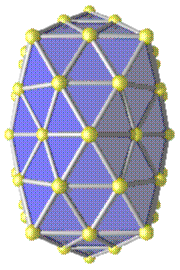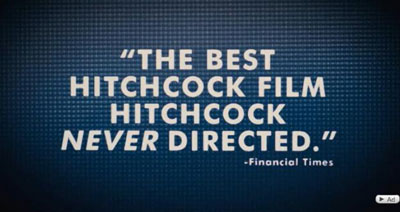A few years back was making quite a few ink wash drawings on legal paper, steno pads, etc. The one below is fairly typical: a quasi-modernist sculpture over what may have been a bleed-through from a hastily-sketched floor plan, outlined in ballpoint. I scanned the drawing (after which it was hit by more raindrops and effectively no longer exists). Then, using an online image-editing program, enlarged the width and converted it to a black and white GIF format.
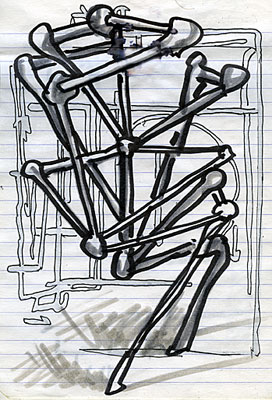
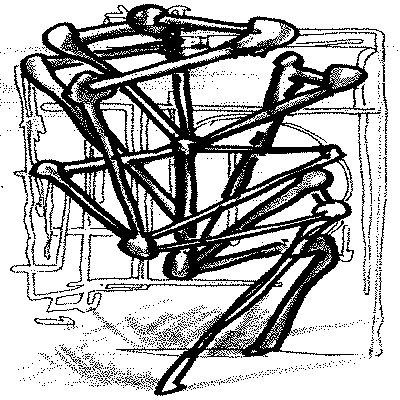
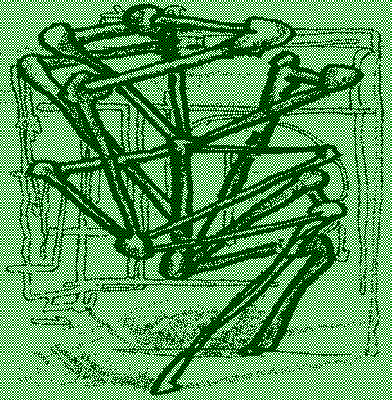
Using another online utility (timb's bong.gs layering tool) I superimposed the green check pattern found by stage, captured the result and saved it as an animated GIF. So now the drawing has a new retro tech sheen to go with the old, differently retro subject matter.
One of the trollgenerator "memes" from a week ago asked "Tom Moody - Who Wants to Make Shitty Art of the '40s into a GIF Anyway?" Exactly.

